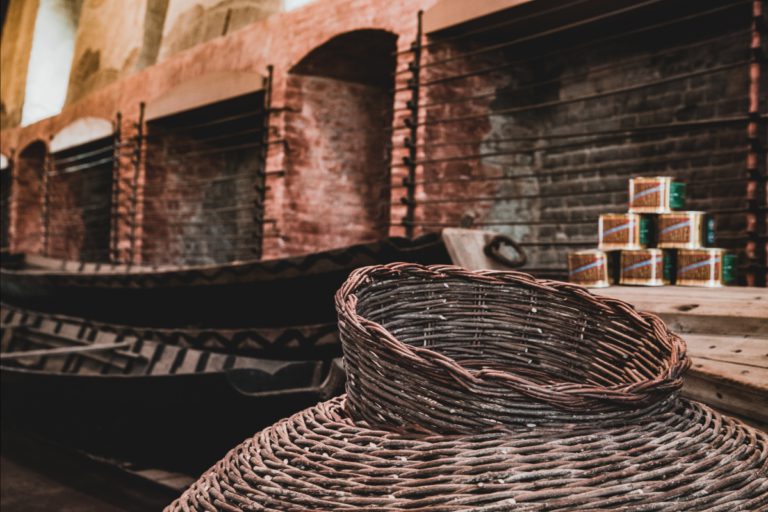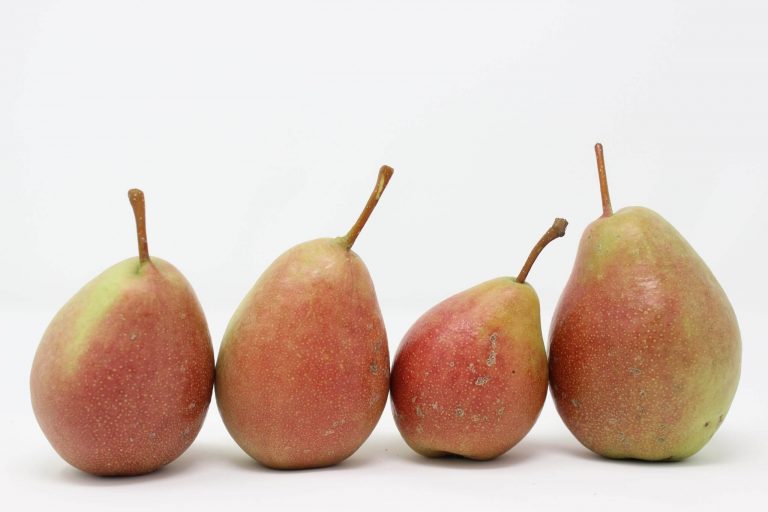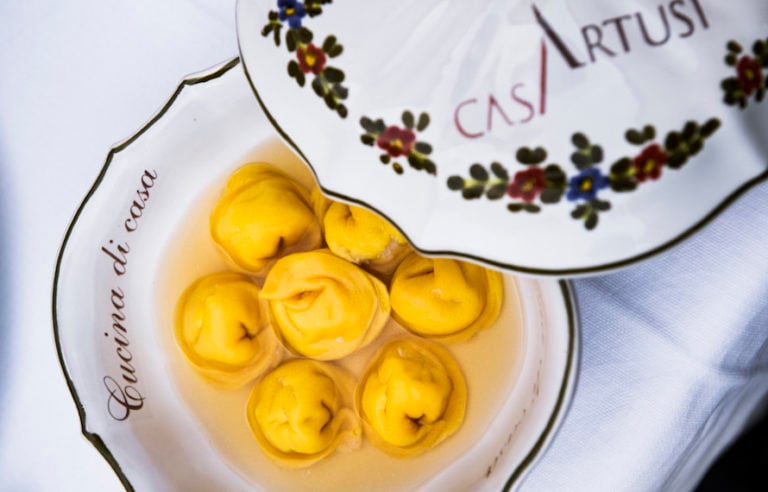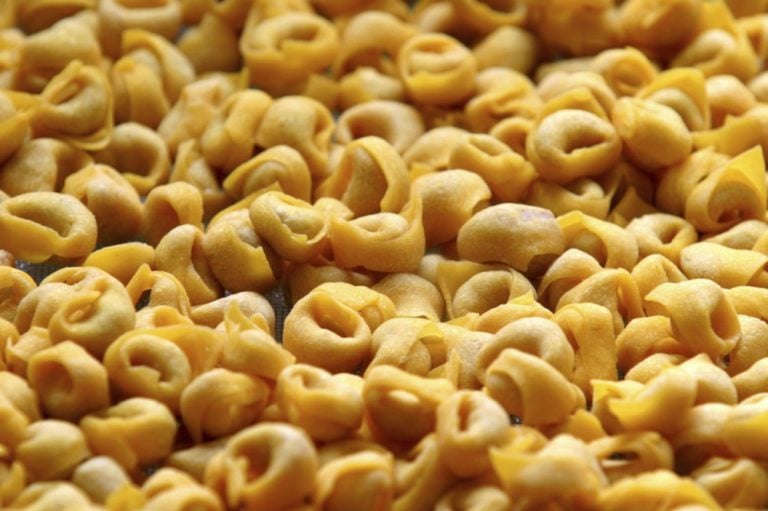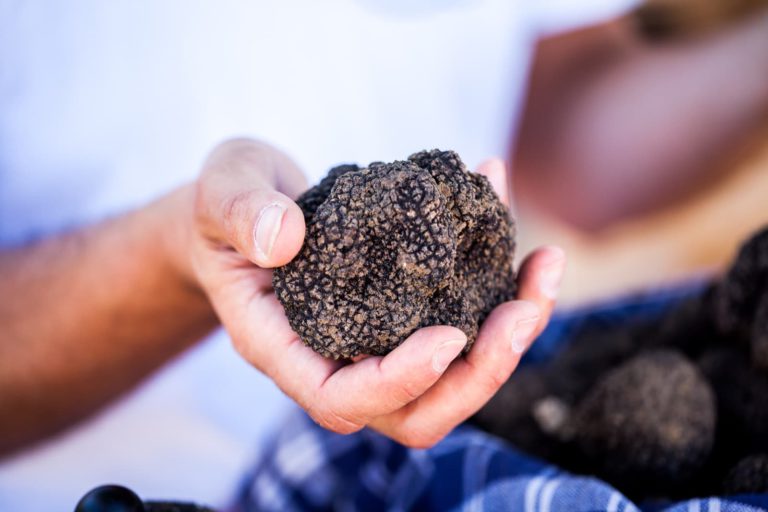There is a special day in Romagna, taking place every year according to an ancient ritual – and it never ceases to enchant our senses.
This day gives us that feeling of anticipation, like when you are about to unwrap a much-desired gift. It is 25th November, the official unearthing day of Formaggio di Fossa.
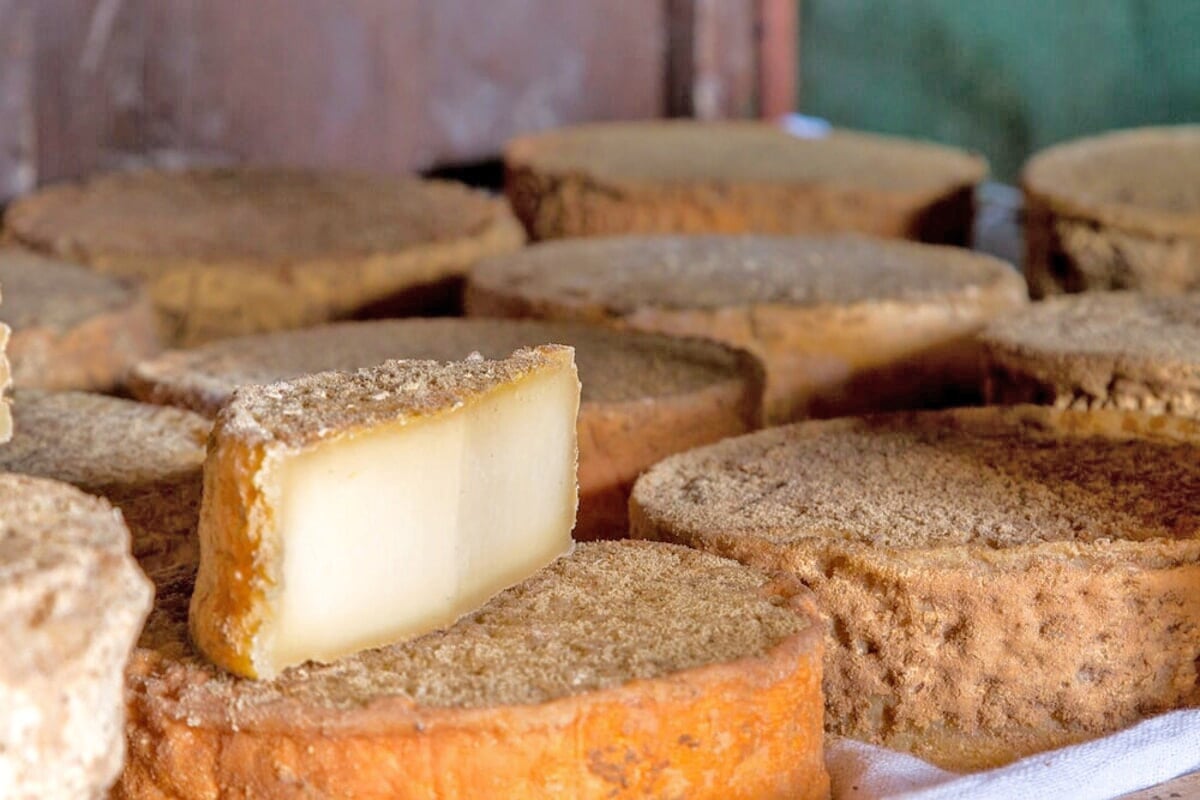
The Origins of Fossa di Fossa
The name of this cheese derives from the practice of storing cheese in pits (in Italian fossa).
This practice dates back to the times of the Malatesta family: legend has it that at that time Romagna farmers began digging pits in the tuff under the floors of their houses to protect their food supplies from looting and to store them better.
Since then, the production of this characteristic product has never ceased, and since 2009 it has also enjoyed PDO certification and an associated consortium for its protection.
According to the tradition, wheels of cheese are buried in pits towards the end of August. The wheels are wrapped in white cotton cloths and placed in pits, circular spaces about 3 metres deep, with an opening of about 80 cm and a base of 2 metres in diameter.
The pits are opened and the wheels of cheese are brought to the surface at the end of November. It is during the 100-day ripening period that the magic happens and the cheese acquires that unmistakable herbaceous scent, reminiscent of hay, moss and wet undergrowth.
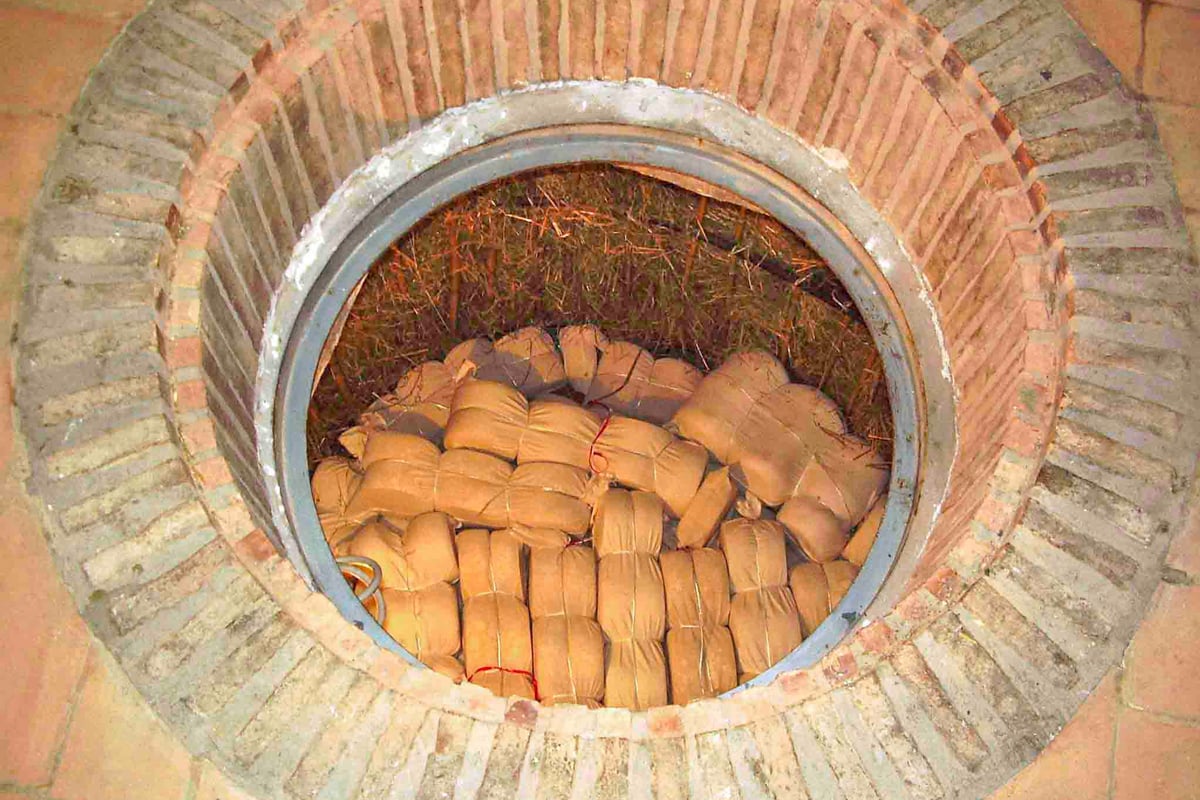
The Formaggio di Fossa
Thanks to this particular process, Formaggio di Fossa has a slightly deformed cylindrical shape. Its rind has an intense yellow colour, while the paste is compact and crumbly, straw yellow in colour.
The flavour is delicate and almost sweet as soon as you taste it, but becomes increasingly spicy and intense as you chew it; obviously, the taste changes depending on the composition of the cheese.
Formaggio di Fossa can be made from only cow’s milk, only sheep’s milk or a mix of the two. The specific use of each one of them gives the final product specific taste characteristics.
For example, the one produced using only cow’s milk is fresh, delicate and whiter in appearance; the mixed one – made with cow’s and sheep’s milk – on the other hand appears more balanced and tasty; finally, the one made with sheep’s milk is the most aromatic and spicy version among the three.
Precisely because of its strong flavour, Formaggio di Fossa is considered a “meditation cheese”, to be savoured slowly, perhaps paired with a soft white wine, an intense red or a passito.
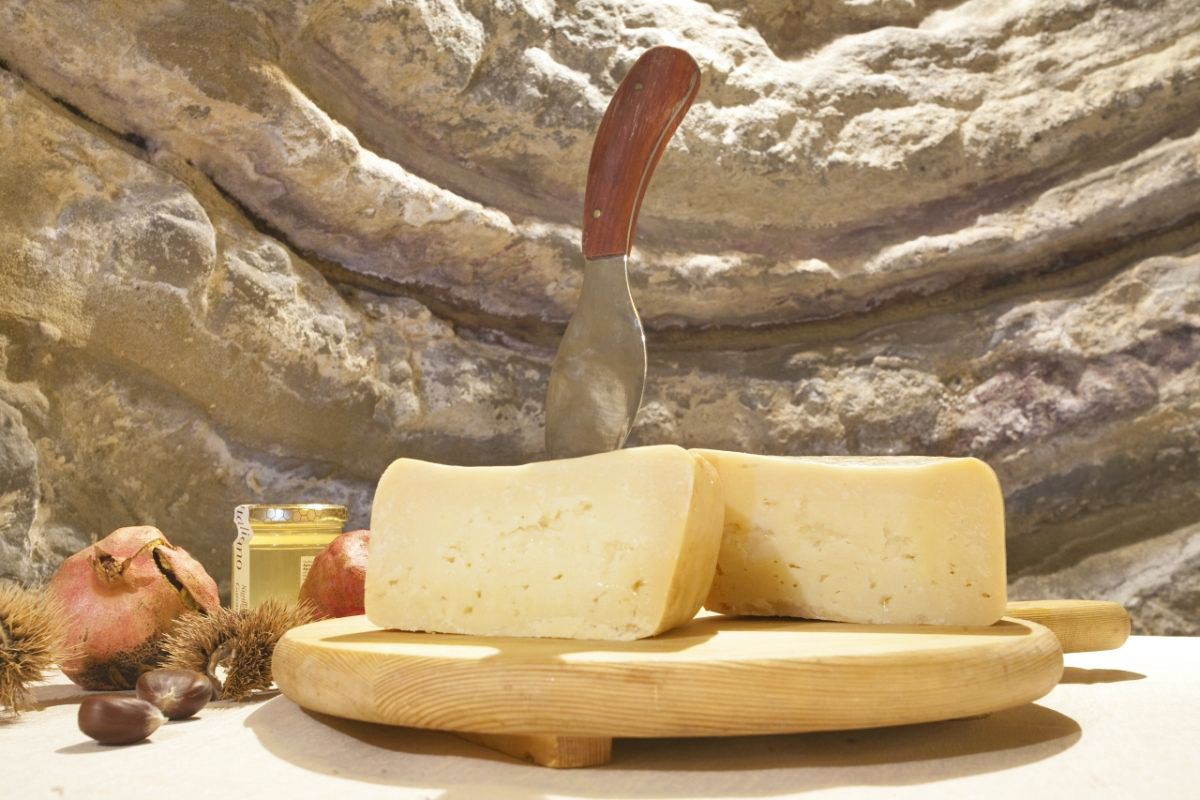
A few tips on how best to enjoy it
Formaggio di Fossa should always be served at room temperature and enjoyed with a fig jam or honey, as they balance off its strength and preserve its aroma.
In the kitchen, it is often used grated as an ingredient in cappelletti and passatelli, or stir-fried as a condiment for pasta or gnocchi.
Where to taste it?
If you can’t wait to taste it, every year the three towns of Romagna (Talamello, Mondaino and Sogliano al Rubicone) host gastronomic festivals in honour of the freshly unearthed wheels of cheese: an ideal opportunity to taste and buy Formaggio di Fossa directly from local producers!
Author

Elisa Mazzini
Social Media Manager for @inEmiliaRomagna and full-time mom.
You may also like

Interested in our newsletter?
Every first of the month, an email (in Italian) with selected contents and upcoming events.
5 food experiences not to be missed in Emilia Romagna
by Elisa Mazzini /// September 6, 2016
